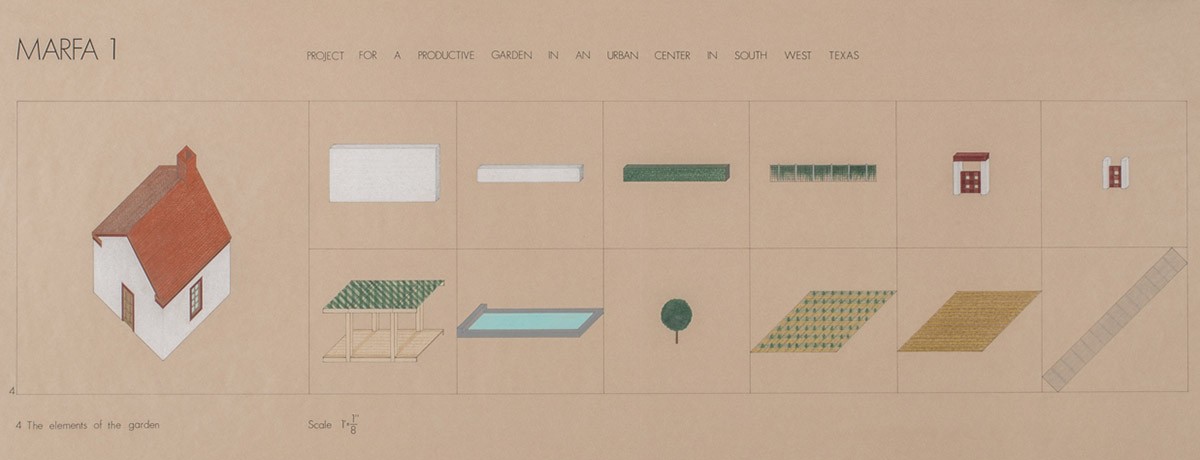

Lauretta Vinciarelli (1943-2011) was an architect, artist, and professor of architecture. Born in Arbe, Italy and raised in Rome, she attended graduate school at the Università di Roma La Sapienza, earning her doctorate in architecture and urban planning in 1971. Vinciarelli moved to New York City in 1969, where she became involved in the Institute of Architecture and Urban Studies until its closure in 1984. She was a vital member of the ReVisions study group, formed in 1981, which hosted public programs that explored the relationship of art, architecture, and ideology. Vinciarelli taught at various architecture schools beginning in 1975 at the Pratt Institute, later teaching at Columbia University (1978-2000), City College New York (1985-1992), and as a visiting professor at the University of Illinois at Chicago (1981) and Rice University, Houston (1982).
In the late 1970s, Vinciarelli began a relationship with Donald Judd as both a professional collaborator and partner. Their collaborative work, occurring over the course of a decade, can be seen in numerous realized and unrealized projects, gardens in West Texas and civic spaces in Providence, Rhode Island and Cleveland, Ohio.
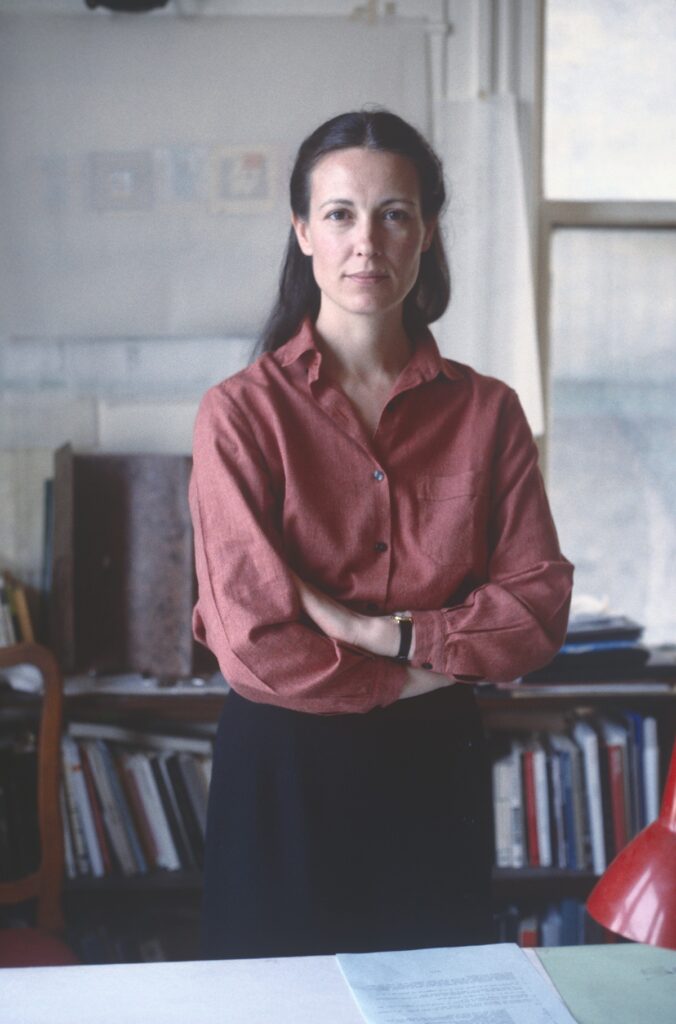
Lauretta Vinciarelli, May 1980
In 1979, Judd commissioned Vinciarelli to make drawings for a garden at the Walker House, a home he owned in Marfa, Texas. The drawings for the Walker House introduce various elements of the garden, such as pergolas, trees, and water features to be employed in the construction of the “garden as a spatial fabric.” Though the plan for the Walker House garden was unrealized, the influence of Vinciarelli’s proposal can be seen in realized structural elements that Judd incorporated at other sites. For example, the pool for the Walker House closely resembles the pool Judd later realized in concrete at La Mansana de Chinati/The Block. Additionally, the doors on the north and south side of the property resemble the doors on the north and south side of the Arena at the Chinati Foundation/La Fundación Chinati, the public art foundation that Judd established in Marfa in the mid-1980s.
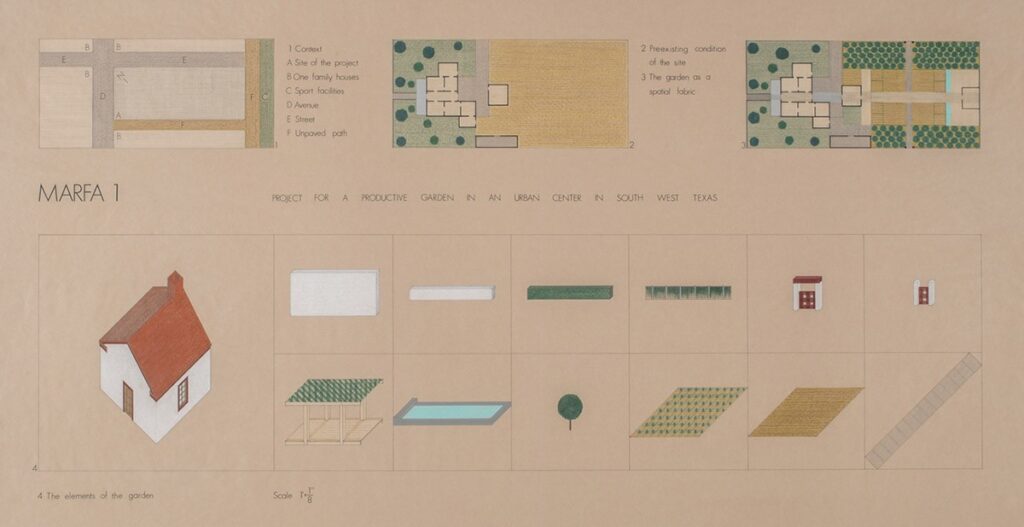
Lauretta Vinciarelli, [Project for a Productive Garden in an Urban Center in South West Texas], c. 1979, colored pencil on tracing paper, 1 of 3 drawings, each 23 1/4 × 41 1/4 inches (59.1 × 104.8 cm)
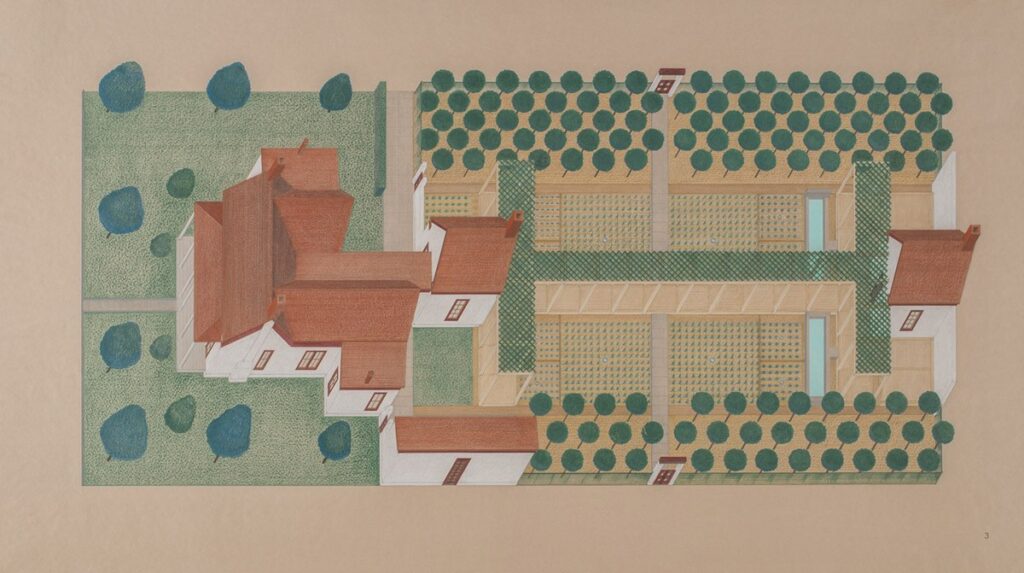
Lauretta Vinciarelli, [Project for a Productive Garden in an Urban Center in South West Texas], c. 1979, colored pencil on tracing paper, 1 of 3 drawings, each 23 1/4 × 41 1/4 inches (59.1 × 104.8 cm)
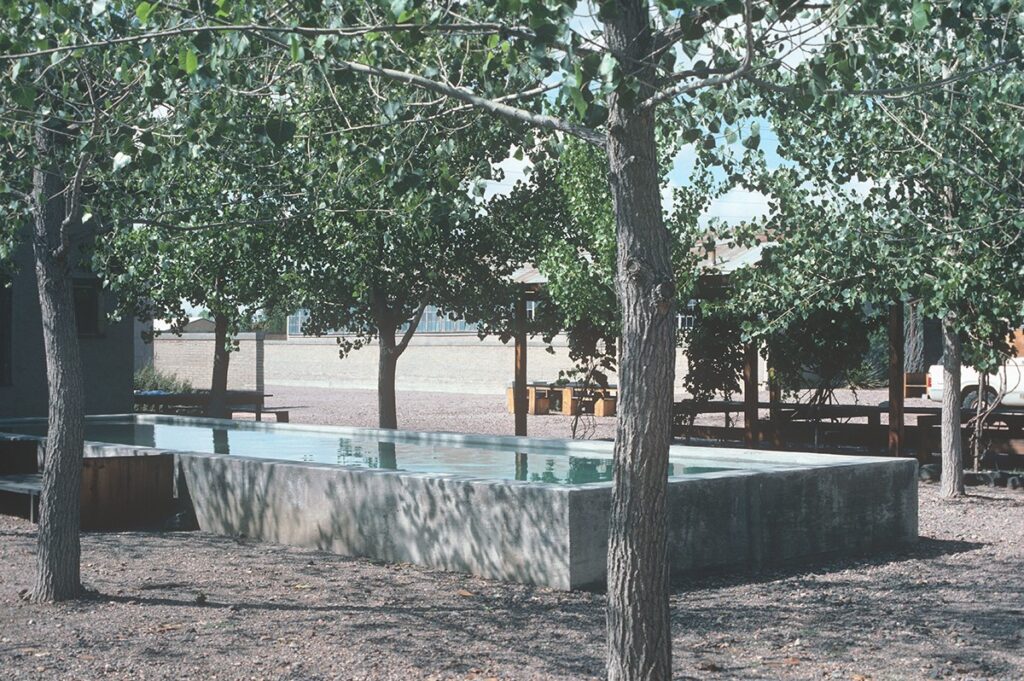
Pool, La Mansana de Chinati / The Block, January 1982. Photo by Lauretta Vinciarelli
In the early 1980s, Judd and Vinciarelli collaborated on a project for Kennedy Plaza in Providence. Judd proposed a project that would be, in his words, “built in place, particular to the site, the whole complex, and with some purpose,” noting that, “Since the project was close to being architecture, I asked a friend, Lauretta Vinciarelli, an architect, to be partners.” Their proposed project was for a series of concentric circles made of granite sand and gravel from a quarry nearby Providence. Each circle would serve a different function, with the main circle allowing for public dialogue by providing a physical platform for public discussion in proximity to the Providence City Hall. As a result of bureaucratic disagreement, the series of circles was decreased to one main circle, and even that, in the end, was called off. As Judd wrote of the situation, “Respect for knowledge, even information, can’t exist in such a situation. Cause and result of this is the increasing subdivision of planning, architecture, the design of utensils and furniture, everything, even art is imminent; design becomes Design, a category; everything is in a category.”
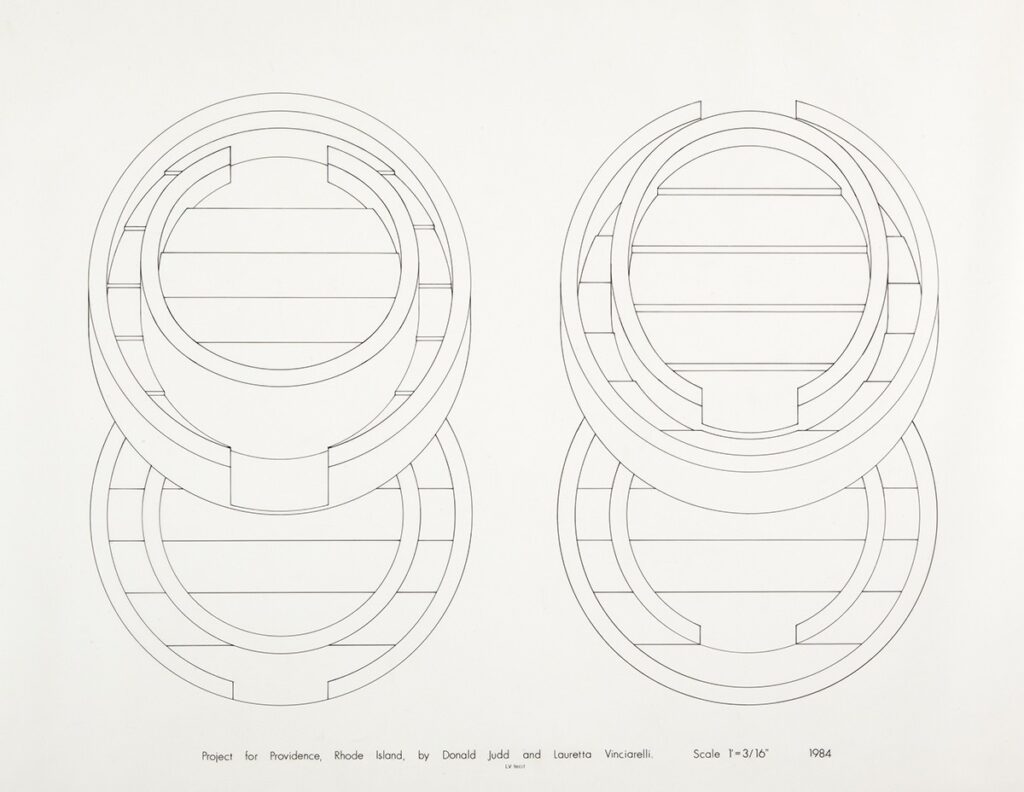
Drawing by Lauretta Vinciarelli, Axonometric drawing for project in Providence, Rhode Island, 1984, ink on tracing paper, 23 3/4 x 30 inches (60.3 x 76.2 cm)
In 1986, Judd was asked to participate in the design of a large complex for the Progressive Insurance Company in Cleveland, Ohio. As Judd wrote of the planning of the project: “In thinking a little, I soon thought a lot, and became enthusiastic and asked Lauretta Vinciarelli, an architect and a professor at Columbia University, and Claude Armstrong, an architect in New York City, and Donna Cohen to visit Cleveland and also think. This produced some sketches, plans and a model.” Judd and Vinciarelli conceived of a building or buildings that could be like, as Judd described, “a skyscraper prone,” allowing for a series of interior, open volumes, similar to courtyards that could allow for public functions. In a 2008 interview with Vinciarelli, as part of Judd Foundation’s Oral History Project, Vinciarelli described the project as an attempt to “bring the city…toward the lake.” Like the project for Providence, the Progressive Insurance Company project was not realized.
Judd Foundation is pleased to present Lauretta Vinciarelli, an exhibition of drawings and watercolors by the architect and artist on the ground floor of 101 Spring Street in New York. The exhibition will be on view from March 29 through June 29, 2019.